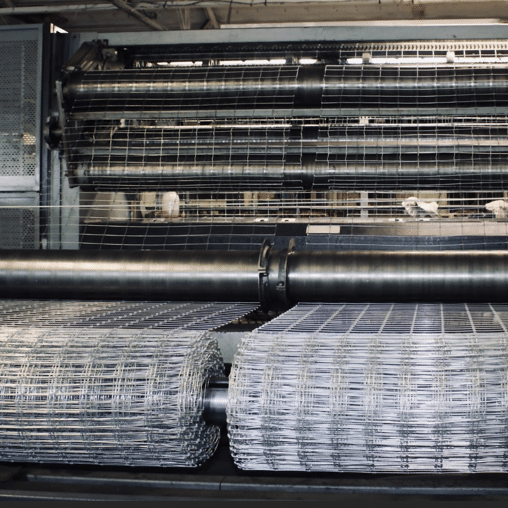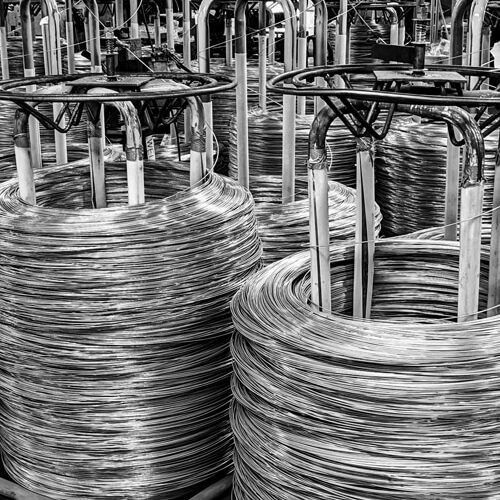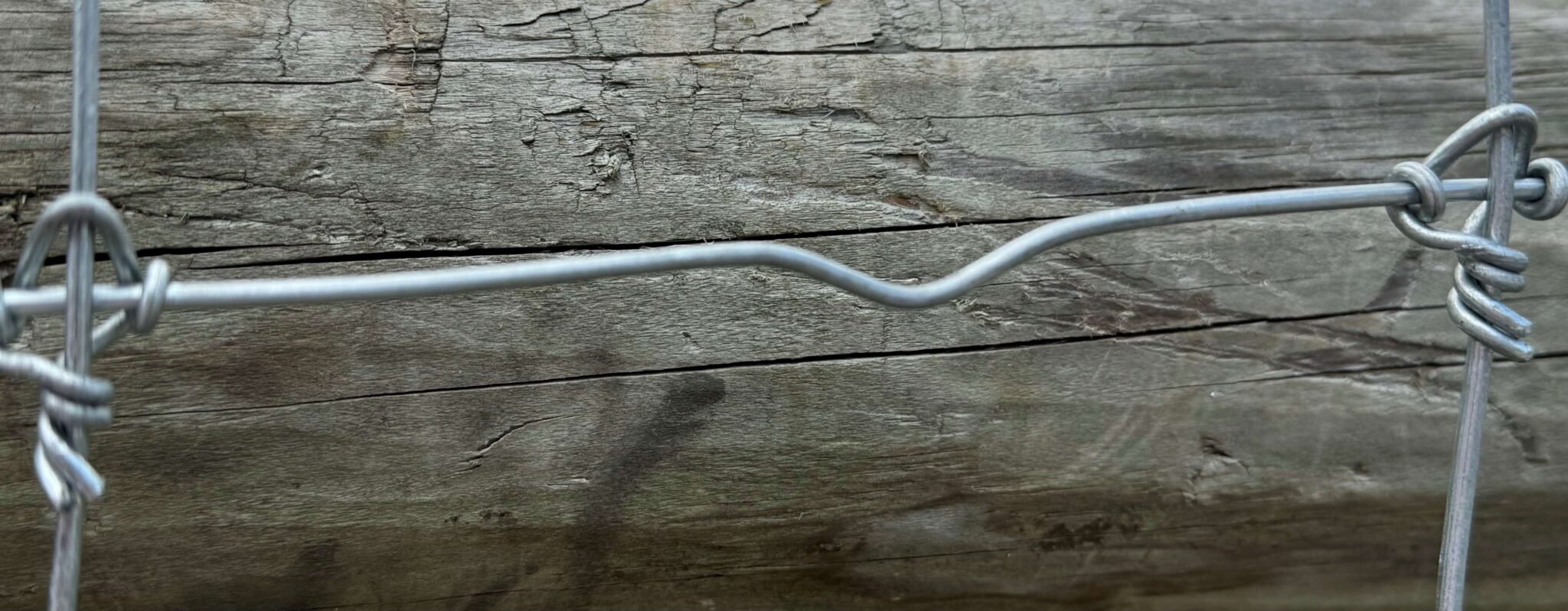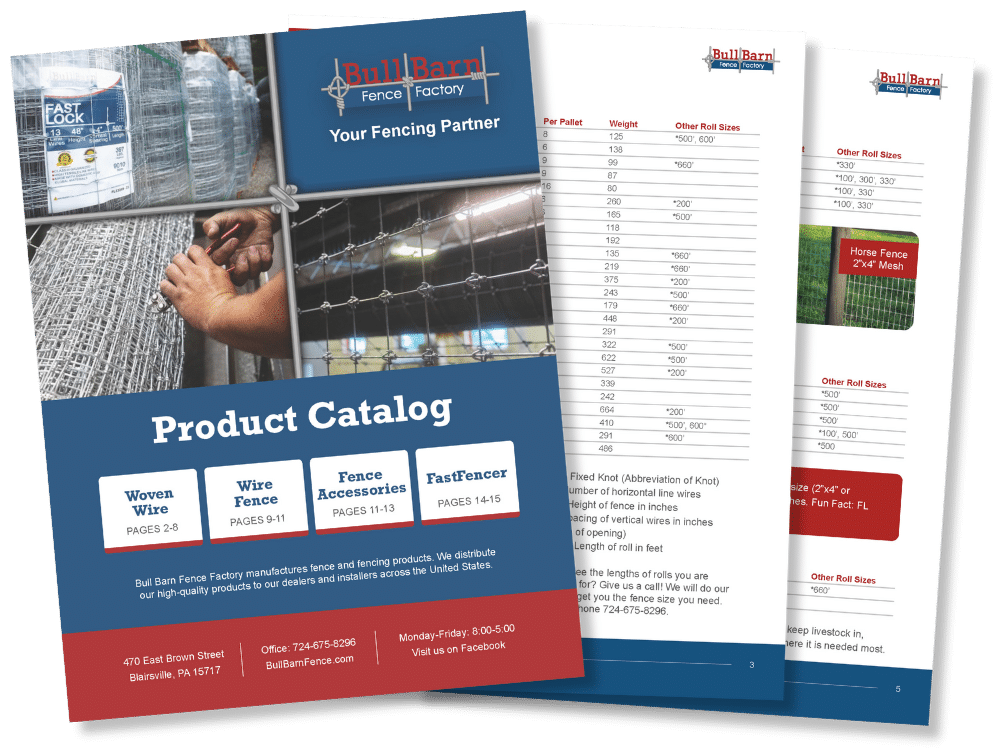Frequently Asked Questions
Product Knowledge
If you want to unravel some of the technical aspects of Bull Barn Fence Factory’s woven wire fence, take a look at these explanations.

What is the difference between the knot styles?
Fixed knot is the strongest woven wire knot, uniting the vertical and horizontal lines with a third wire that ties a firmly twisted knot around them. We recommend this heavy duty fence for applications that may take a great deal of animal pressure over time.
FastLock knot is an S-shaped twist of wire that links the vertical and horizontal wires for a smooth joint. This knot is preferred for livestock applications where hide or hair could get caught in the fence
Hinge Joint is the tried-and-true fence that has a pigtail wrap of the vertical stay wire around the horizontal lines. This joint allows for flexion over varied terrain, which made it a preferred style for highway fence applications.
What does the fence item number mean for woven wire fence?
Example: FK7/24/6 330’
FK-Fixed Knot (Abbreviation of the knot style. Also, FL-FastLock, HJ- Hinge Joint)
7- Number of horizontal line wires
24-Height of fence in inches
6-Spacing of vertical wires in inches (width of opening)
330’-Length of roll in feet


What does Class 3 Galvanization mean?
Class 3 Galvanization is a method of wire coating that prevents rust and corrosion by applying a zinc coating. Class 3 Galvanization has nearly a three times thicker coating of zinc than Class 1, sometimes called Commercial Grade, which means a longer lasting fence even in harsh environments.
What is the difference between high tensile and low carbon wire?
High tensile wire’s higher carbon contents gives it a high breaking point and resistance to sagging or stretching over time or pressure. High tensile wire stays taut, requiring less maintenance to tighten the fence over the years. High tensile wire is flexible and stretches back into place when a tree falls on it or when animals push against it. Another advantage to high tensile wire is that fence posts can be placed at a greater distance as the high carbon wire resists sagging. Fewer fence posts saves money and time in fence installation without sacrificing durability.
Low Carbon wire, also called mild steel, contains less carbon than high tensile wire. Low Carbon wire is more malleable than high tensile, so it can be easier to work with. However, Low Carbon can elongate over time or pressure.


What is the purpose of the bumps (tension curves) in the line wires?
Bull Barn Fence’s woven wire has tension curves along the line wires (also called the horizontal wires). These curves help to balance the tension of the fence. When building fence, tighten the fence until it is taut, but don’t remove the tension curve completely. High tensile wire will maintain its strength and the tension curves will allow the necessary give to adjust to weather and pressures.
Download Our
Free Brochure
Discover the Bull Barn Difference
Ready to explore high-quality, American-made fencing solutions?
Our free brochure is packed with everything you need to know.


